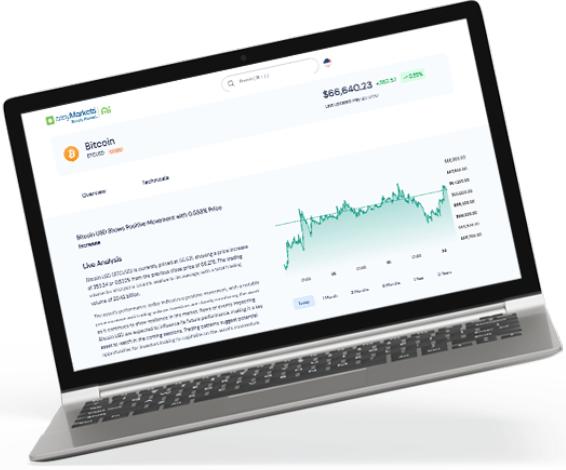LA wildfires burn through US economy: Market volatility and trading opportunities

Every year, wildfires in California make headlines, but the recent LA wildfires have raised concerns not only for public safety and environmental damage but also for their economic repercussions.
With an estimated $150 billion in property damage, strained insurance resources, supply chain disruptions, and shifting job markets, these natural disasters can send shockwaves beyond state lines, especially in a powerhouse economy like California’s, which exceeds three trillion dollars in GDP.
For traders, understanding how these wildfires ripple through different asset classes, from insurance stocks and commodities to the USD, is crucial. Below is an overview of the key sectors likely to feel the impact, along with potential strategies for navigating such turbulent market conditions.
1. Insurance sector
Wildfires often result in large-scale insurance claims for homeowners, businesses, and vehicle owners, which are likely to strain the insurance industry and force insurers to raise premiums or reduce coverage in high-risk areas.
Potential market moves
- Insurance Stocks: Shares of major insurance companies may experience short-term drops if losses escalate. Over time, these companies typically adjust premiums, which may support a recovery in stock prices, but only after the extent of the damage becomes clearer.
- State-backed coverage: As private insurers reduce exposure in high-risk areas, more policies shift to state-backed pools, increasing public-sector liabilities.
2. Commodities
When it comes to commodities, lumber and steel prices often spike due to rebuilding demand. California’s vast rebuilding efforts in this case can strain supplies.
This is in addition to the damage to energy infrastructure, which can lead to short-term price hikes in natural gas and electricity.
Potential market moves
- Lumber prices: Widespread destruction of timberland or increased construction demand can push lumber futures higher.
- Energy markets: Temporary disruptions can cause localized price surges for electricity and fuel, though broader movements often depend on how quickly infrastructure is restored.
3. Real estate and construction
Property damage to burned homes and commercial buildings reduces local real estate inventories in affected areas, potentially lifting property prices in safer regions while depressing values in fire-prone zones.
In the aftermath of such large-scale destruction, construction firms usually see a surge in demand, but labor and material shortages can drive up costs.
Potential market moves
- Stock volatility: Stock prices for construction and home improvement companies often rise with rebuilding efforts, at least in the immediate term.
- Local real estate: Value in wildfire-prone zones may see downward pressure, with investors shifting to less risky geographies.
4. Tech sector
California is the largest exporter of computers and electronics in the United States, with the tech sector playing a major role in the state’s economy. While the bulk of high-tech manufacturing facilities are spread across the Bay Area and beyond, LA wildfires can still pose significant supply chain disruptions. This includes port closures or damage to infrastructure near Los Angeles, which can delay the movement of electronics and boost costs.
Potential market moves
- Shipping delays: Even if manufacturing happens outside the impacted areas, exports and imports through LA ports could be bottlenecked.
- Remote work resilience: Many tech firms have robust remote-work policies and distributed data centers, reducing some operational risks.
5. Inflation and the Federal Reserve
While the Federal Reserve does not usually engage directly in disaster relief, it closely monitors any situation that could destabilize the broader US economy. If wildfire-induced inflationary pressures and supply chain disruptions become severe, we could see the Fed tweak interest rates to temper rising prices or support economic growth.
And let’s not forget the cost of infrastructure damage, which can be passed onto consumers in the form of higher taxes or utility fees.
Potential market moves
- Interest rate speculation: If wildfire-induced inflation appears persistent, the Fed could adjust rates to temper price growth.
- Stimulus and debt: Government relief packages may boost local economies in the short term but can add to national debt, influencing bond yields and currency valuations.
Traders can also monitor official statements and economic indicators for clues on inflation trends and potential interest-rate changes. Using wise risk management tools such as stop-loss orders can also help manage downside risk.
6. Currency markets (USD)
Massive government spending often sparks debates around inflation and rising debt levels, both of which can influence the USD. If the markets perceive new policies as stabilizing and likely to spur growth, the USD may strengthen due to increased investor confidence. However, concerns about inflation and budget deficits could weigh on the currency.
Sound fiscal management, accompanied by transparent disaster-relief measures, can support confidence in U.S. assets. On the other hand, unchecked spending might dampen international demand for the dollar.
Potential market moves
- Short-term volatility: The USD could see some volatility as investors weigh the impact of potential inflation and debt issuance.
- Long-term outlook: If disaster spending is managed responsibly, international confidence in the U.S. economy can remain robust – supporting the dollar.
Traders can also monitor official statements and economic indicators for clues on inflation trends and potential interest-rate changes. Using wise risk management tools such as stop-loss orders can also help manage downside risk.
How traders can navigate the volatility
- Diversification
Spreading your exposure across sectors like commodities, tech, and insurance is likely to mitigate concentrated risk. - Hedging Tools
Utilizing derivatives – options, futures, and CFDs – will likely help to hedge against adverse moves, especially in highly sensitive areas like construction materials or insurance. - Stay Informed
Keep a close eye on official announcements, economic data releases, and corporate earnings guidance that might reveal the true financial impact of the wildfires. - Focus on Long-Term Themes
- Sustainability: Companies offering climate-resilient solutions or fire-proof materials could see increased demand.
- Infrastructure: Government-sponsored rebuilding projects might boost sectors tied to roads, utilities, and green energy.
- Risk Management
- Apply reasonable stop-loss levels and position sizing.
- Remember that natural disasters can quickly change market sentiment.
Conclusion
The ongoing LA wildfires are a stark reminder of how localized natural disasters can have far-reaching economic and market implications. From straining insurance companies and inflating commodity prices to affecting real estate values and supply chains in the tech sector, the consequences can be significant. For traders, these disruptions create both challenges and opportunities.
By closely monitoring how insurance firms adapt to massive payouts, following commodity price moves, watching Fed policy for signals on interest rates, and observing the U.S. dollar’s reaction to government spending, traders can better position themselves to navigate volatility. While the human toll of such disasters is always the primary concern, understanding the financial repercussions allows traders to manage risk effectively and, where appropriate, capitalize on evolving market trends.





















